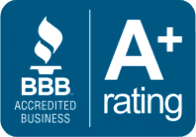Have you been ARRESTED or contacted by the Police, a Detective, FBI, or CPS?
Possession For Sale Manufacturing Of Crystal Meth Methamphetamine
Possession/Possession for Sale/ Manufacturing of Crystal Meth/Methamphetamine in Los Angeles
California law criminalizes a wide range of activities involving methamphetamine, including the simple possession, possession for sale, manufacture, transportation, and trafficking of the drug. A conviction for most of these activities will subject you to harsh penalties, such as incarceration. A conviction could also lead to a permanent criminal record that may prevent you from securing employment, owning a firearm, or obtaining financial aid for school.
What Is Crystal Meth?
Methamphetamine is a controlled substance. It is also commonly called meth, shard, tina, crystal meth, crystal, rock, speed, chalk, crank, glass, or ice. Under California law, a controlled substance is a chemical or drug whose manufacture, use, and possession are regulated under The U.S. Controlled Substance Act (21 U.S.C. § 801, et. seq.
See: https://www.dea.gov/drug-information/csa
Meth is a Schedule II stimulant. It essentially speeds up your brain and is available in powder, pills, or chunky crystal rocks. Meth can be injected, smoked, snorted, huffed (inhaled), or swallowed.
In the 1950s, methamphetamine was mainly used to assist in keeping college students, athletes, and truckers stay alert and awake. Nowadays, it is deemed a dangerous drug and is generally only prescribed to treat conditions such as attention-deficit/hyperactivity disorder (ADHD) and obesity. Still, doctors rarely prescribe it since more effective and safer medications are now available.
Methamphetamines are often abused and sold or made illegally. Most methamphetamine in the U.S. comes from Mexico. Notwithstanding, California still has many homegrown meth labs. People operate these labs out of their warehouses, mobile homes, garages, and homes.
Not surprisingly, California meth-related crimes are aggressively prosecuted.
See: https://www.webmd.com/mental-health/addiction/crystal-meth-what-you-should_know#1
Criminal Defense
Menu










Possession of Methamphetamine
(Health and Safety Code section 11377):
Per California H.S.C. § 11377, it is against the law to possess meth when you do not have a valid prescription for it. An exception is made for medical professionals (doctors, veterinarians, pharmacists, and others) who possess this drug in accordance with California drug laws. This offense is typically charged as a misdemeanor.
To be convicted of methamphetamine possession, the prosecution must prove these elements beyond any reasonable doubt:
- That you had constructive or actual possession of the meth;
- You knew the drug was meth;
- You were aware the substance you had was regulated, even if you did not know it was methamphetamine; and
- You had a usable amount of the narcotic, not just useless residue or traces.
By actual possession, it implies the law enforcement officers found the meth on you — for instance, in your backpack or pocket.
By contrast, constructive possession means the officers found the meth in a location you had control over and to which you had a right to access; for example, your glovebox, garage, home, or kitchen drawer.
Unless you admit to the authorities that you were aware the substance you had was meth, the prosecution will be required to demonstrate this fact by circumstantial evidence. This may include your conduct during the search or arrest. For instance, if you attempted to destroy, lie about, or hide the drugs, it is reasonable to deduce you were aware they were illegal.
- See also Possession of a Controlled Substance (California Health and Safety Code section 11350:
- CALCRIM Number 2400 (“Using or Being Under the Influence of Controlled Substance — Health & Saf. Code § 11550”:
- CALCRIM Number 2401 (“Aiding and Abetting Unlawful Use of Controlled Substance — Health & Saf. Code § 11365”:
- CALCRIM Number 2440 (“Maintaining a Place for Controlled Substance Sale or Use — Health & Saf. Code § 11366”:
Penalties for a Methamphetamine Possession Conviction (H.S.C. § 11377)
Possessing meth is considered a misdemeanor offense. The penalties upon a conviction include up to a year in county jail. However, under the state’s following drug diversion programs, you may have your incarceration period suspended if you agree to participate therein:
- Drug Diversion (California Penal Code section 1000)
- Proposition 36 Drug Treatment Diversion Program
- California “Drug Court”: https://www.courts.ca.gov/5979.htm
- Judicial Diversion (Court Initiated Diversion) (California Penal Code section 1001.95: https://codes.findlaw.com/ca/penal-code/pen-sect-1001-51.html)
- Informal Diversion (California Penal Code section 1001.94; California Penal Code section 1001.95: https://codes.findlaw.com/ca/penal-code/pen-sect-1001-51.html)
- Military Diversion (a.k.a. Veterans Diversion) (California Penal Code section 1001.80)
Additionally, you may be subject to an additional incarceration period of up to three years if you have any of these convictions as priors on your criminal record:
- Vehicular Manslaughter While Intoxicated (California Penal Code section 191.5(b));
- Forcible Rape of a Minor Under Fourteen (California Penal Code section 264 (c)(1));
- Aggravated Sexual Assault of a Minor Under 14 (California Penal Code section 269));
- Any other sex crime where the victim was 13 or younger;
- Any crime involving sexual violence;
- Murder (California Penal Code section 187(a));
- Any sex offense mandating you to comply with the sex offender registration requirement. See Sex Offender Registration (California Penal Code section 290).
See also Possession of a Controlled Substance While Armed with a Firearm (California Health and Safety Code section 11370.1):
Possession of a Controlled Substance with Intent to Commit Sexual Assault (California Health and Safety Code section 11350.5) & California Health and Safety Code section 11377.5):
CALCRIM Number 2304 (“Simple Possession of Controlled Substance — Health & Saf. Code §§ 11350, 11377”:
Defending Against Methamphetamine Possession Charges
Meth is among the most notorious drugs in circulation in California. Thus, the authorities go out of their way to arrest and prosecute methamphetamine dealers and even users (at least in rural counties in this state). This rigorous approach to the war against drugs, however, often results in the conviction of innocent people.
The first step your lawyer should take is fact-checking whether the first police encounter that resulted in the meth discovery was legal. The prosecution cannot use evidence acquired from an unlawful arrest or search against you at the trial. Law enforcement officers must comply with strict requirements set by both the U.S. Constitution and the California Constitution when searching or pulling over vehicles, arresting a person, or entering private property.
In many cases, the police will inadvertently or intentionally violate the suspect’s legal rights. If this happens, the suspect’s attorney can demand that the charges be dismissed. When this strategy is not an option, your lawyer may still apply the following defense strategies:
- Arguing you were not aware you had the drug, or you did not know it was a regulated substance;
- Showing that you were not in constructive or actual possession of the meth;
- Proving that the substance you had was not meth, or you had only traces or residues of the drug; and/or
- You only temporarily possessed the meth.
See CALCRIM Number 2305 (“Defense: Momentary Possession of Controlled Substance”: ).
Possession for Sale of Methamphetamine (Health and Safety Code section 11378)
Possessing meth for sale is criminalized under H.S.C. § 11378. As the topic suggests, a prosecution under H.S.C. § 11378 necessarily entails the accusation that the suspect had a quantity of meth while intending to sell it now or sometime in the future. The police do not have to catch you in the act of selling meth to face H.S.C. § 11378 charges.
For you to be convicted, the prosecution must prove the following beyond any reasonable doubt:
- You illegally had a controlled drug;
- You knew you had it;
- You were aware the drug was a regulated substance;
- You had enough quantity to sell for consumption; and
- You possessed the drug intending to sell.
As with simple possession, you can be in actual or constructive possession of meth for sale. The prosecution will generally try proving the intention to sell the drug by the packaging, quantity, the presence of a large amount of cash or weighing scales, presence of paraphernalia, as well as witness statements.
See also Possession for Sale of a Controlled Substance (California Health and Safety Code section 11351)
- CALCRIM Number 2302 (“Possession for Sale of Controlled Substance — Health & Saf. Code §§ 11351, 11351.5, 11378, 11378.5”:
- CALCRIM Number 3200 (“Controlled Substance: Quantity — Pen. Code §§ 1203.07(a)(1), (2) & (4); Health & Saf. Code §§ 11352.5, 11370.4”:
Penalties for a Methamphetamine Possession for Sale Conviction (H.S.C. § 11378):
Meth possession with the intent to sell is a felony punishable by up to three years in the county jail (and not state prison).
In addition, you could be subject to a sentence enhancement based on various aggravating circumstances. For instance, if you had the meth within 1000 ft. of a homeless shelter or narcotics treatment facility, you will face a sentence enhancement of one year.
Or, if you had more than a kilogram of meth for sale, you would face a sentence enhancement of between three and fifteen years in prison. If you used a child to help sell meth, you would face a sentence enhancement of three, six, or nine years in prison.
If you are an alien, a conviction under H.S.C. § 11378 could result in deportation or other negative immigration consequences.
Finally, you are ineligible for a Drug Diversion (California Penal Code section 1000: https://leginfo.legislature.ca.gov/faces/codes_displaySection.xhtml?lawCode=PEN§ionNum=1000) program if found guilty of meth possession for sale.
See Possession for Sale of Methamphetamine While on Bail (California Penal Code section 12022.1):
Sentencing Enhancements for Kilogram Quantities of Controlled Substance (California Health and Safety Code section 11370.4):
Fighting Meth Possession for Sale Accusations
Like many other possession-related offenses, defenses to H.S.C. § 11378 violations often focus on illegal searches and seizures. If the police obtained evidence against you through illegal means, violating the Fourth Amendment of the U.S. Constitution, the judge should suppress the evidence as they cannot use it to prosecute you.
Generally, in the absence of narrowly drawn exception (such as “exigent circumstances”), the police cannot search you if they have no valid warrant signed by a judge showing probable cause.
Challenging Intent
Unlike simple possession of meth, there is the element of ‘intent’ to an H.S.C. § 11378 charge for possessing meth for sale. If you had the meth only for your use and did not aim to sell to another person, you can only be convicted of the lesser offense of Possession of Methamphetamine (California Health and Safety Code section 11377).As mentioned above, a charge of simple meth possession is obviously more favorable for you, even if you are eventually convicted, due to the availability of drug diversion programs and otherwise comparatively lenient sentencing.
Consequently, a common legal defense strategy to a H.S.C. § 11378 charge is to argue that the meth you had was only for your own use, and not for sale. Whether this defense will succeed depends on the absence or presence of indicia of sales activity, including the sheer amount of the meth involved, the presence of sales paraphernalia such as scales, baggies, et cetera, as well as the presence of significant amounts of cash, among other factors.
Manufacturing Methamphetamine
Meth labs present dangerous safety hazards to the general public in many ways. They:
- Breed criminal activity in the area;
- Start fires due to explosions;
- Pollute the environment with toxic substances.
Although police officers work hard to wipe out meth labs, labs are being constantly erected since methamphetamine is a relatively simple narcotic to manufacture. A lab can be erected in any private area, from apartments to garages. Further, the chemicals used in producing methamphetamine can be obtained easily.
Manufacturing Drugs (California Health and Safety Code section 11379.6: https://codes.findlaw.com/ca/health-and-safety-code/hsc-sect-11379-6.html)
California laws criminalizing the manufacturing of drugs cover a broad range of narcotics, including methamphetamine. These laws make it a major felony to manufacture, compound, produce, convert, process, derive, and/or prepare a controlled substance.
See also Manufacture of an Imitation Controlled Substance (California Health and Safety Code section 109575):
- CALCRIM Number 2330 (“Manufacturing a Controlled Substance — Health & Saf. Code §§ 11379.6(a), 11362.3”:
- CALCRIM Number 2331 (“Offering to Manufacture a Controlled Substance — Health & Saf. Code §§ 11379.6(a) & (c)”:
- CALCRIM Number 2335 (“Possession with Intent to Manufacture Methamphetamine or N- ethylamphetamine — Health & Saf. Code § 11383.5(a)”:
- CALCRIM Number 2336 (“Possession with Intent to Manufacture PCP — Health & Saf. Code § 11383(a)”:
- CALCRIM Number 2337 (“Possession with Intent to Manufacture Methamphetamine — Health & Saf. Code § 11383.5(b)(1)”:
- CALCRIM Number 2338 (“Possession of Isomers or Precursors with Intent to Manufacture Controlled Substance — Health & Saf. Code § 11383.5(c)-(f)”:.
Note that you do not have to actually complete the methamphetamine production process for you to be convicted. Partially cooking or participating in the process is enough. You are deemed to have completed the offense when you get involved at any stage thereof. Conversely, however, simply preparing to cook methamphetamine – without actually beginning to cook – falls short of this particular offense.
Allowing Others to Manufacture Drugs in Your Structure (H.S.C. § 11366.5):
Operating or Maintaining a Drug House (Health and Safety Code section 11366):
H.S.C. § 11366 is the state’s statute that particularly penalizes people who control or manage the manufacturing of methamphetamine and knowingly do any of these:
- Allow another person to distribute, sell, store, or produce a drug in that space;
- Allow that space to be equipped to protect against authorities from raiding it;
- Sell drugs more expensively than what is considered fair.
See CALCRIM Number 2440 (“Maintaining a Place for Controlled Substance Sale or Use — Health & Saf. Code § 11366”:
Also, you may face additional charges under the state’s aiding and abetting or conspiracy laws if you are making meth, buying equipment to produce meth, mixing chemicals to manufacture meth, et cetera.
See Aiding and Abetting/Accessory After the Fact (California Penal Code section 32:
Conspiracy (California Penal Code section 182 & California Penal Code section 189(e):
Solicitation to Commit a Crime (California Penal Code section 653f).
Defending Against Manufacturing Methamphetamine Charges
The following are the most prevalent defenses to meth manufacturing charges:
False Accusations/Mistaken Identity
You may be a victim of false accusations. For instance, a person may blame you so they can evade their own culpability. Other reasons may include a “witness” blaming you merely because they are jealous or want revenge. The eyewitnesses or police officers may also have mistaken you for the actual culprit leading to wrongful charges.
You Were at the Wrong Place at the Wrong Time
Because meth labs may be operated almost anywhere, including locations where many people reside, you might have lived in the area/building where a lab was being run but did not know about it or otherwise were not involved in the manufacturing.
Unlawful Search and Seizure
The size of the methamphetamine lab you were allegedly running does not matter if the police find it through unlawful means. If that is the case, the judge should suppress that evidence. Violating search and seizure laws includes:
- Searching with an invalid warrant;
- Searching with no search warrant;
- Searching outside of the area covered by a search warrant;
- Searching when there is no probable cause; and
- Exceeding the scope of the warrant’s parameters.
Your Actions Were Only Preparatory
Preparing to manufacture meth does not suffice. But if you are in the middle of completing a meth production step and the police intervene, you will only face half the sentence upon a conviction. In other words, this would essentially be considered an attempt crime.
See Attempt Offenses (California Penal Code section 664 & section 211):
Penalties for a Manufacturing Methamphetamine Conviction (H.S.C. section 11379.6)
Manufacturing methamphetamine is considered a felony in California, punishable by a low, mid, and high prison term of three, five, and seven years in prison (between five and seven years if convicted of actually manufacturing crystal meth).
Although less severe, offering to assist in manufacturing meth is also a felony punished by up to five years in prison.
If the manufacturing caused bodily injury to someone else, namely due to an explosion, you would face an additional year for every injured victim. Causing a fire may also result in an Unlawfully Causing a Fire (Reckless Burning) charge under California Penal Code § 452 a less severe crime than Arson (California Penal Code section 451:
If you had a child under 16 years of age in the structure where meth was produced, you might face an extra five to seven years in prison. If the child sufferws bodily injury, you will face an additional five years in prison. If you used a minor’s help to manufacture meth, you might face three to nine additional years in prison.
If you have past convictions of various drug offenses, including:
- Possessing a drug for sale;
- Transporting/selling a drug;
- Selling/possessing for sale of meth;
- Manufacturing drugs.
You will face an additional three years in prison for every past felony conviction, regardless of whether you served a prison sentence.
If you allowed another person to run your meth lab, you could be subject to a prison sentence of four years.
"Ninaz is highly professional, organized, and talented."
RobertClient
"I always refer to Ninaz Saffari as a fighter in the courtroom. I walked out of court a free-man due to this attorney's hard work and know-how."
Kevin F.Client
"She not only makes you feel comfortable but she is very competent and experienced in pretty much any kind of situation and scenario. I feel very lucky to know her."
AddyClient